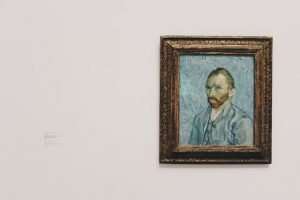Art Prices is a blog that tracks the prices of pieces of art throughout history. It breaks down the prices into time periods, separating what they call “blue chip” artwork (the top 1% of all art sold) from the rest. Art Prices also tracks how different eras and art movements affect art prices. In this way, you can see how much Andy Warhol’s work has increased in price over time, or how the prices of cubism changed over time.
Towards the end of each entry, there are links to experts on the subject who discuss how these trends have changed the art market. Each blurb highlights a particular point that might be interesting to a potential buyer–for example, Andy Warhol’s art will increase in value over time because his work is so iconic, but because it is so easily recognizable for what it is, you won’t make as much on resale as you would with an artist whose style was less distinctive.
The site also features interviews with experts about why certain artists’ work gained value over time (or why it didn’t), and what buyers should look for when purchasing something that they hope will be valuable in the future.
Art Prices is a great resource if you’re looking to purchase artwork or if you’re just
Art prices have risen dramatically since the 1960s, according to the Post article. In part, this is due to inflation. In addition, more people are collecting art, and auction houses are better at marketing artists in their prime.
The Post article also discusses two other factors: the increase in demand for contemporary art and the decrease in supply because of the death of many older artists.
A better understanding of why art prices fluctuate over time can help you make wise buying decisions. Although you might be willing to pay a higher price for an artist’s work when he or she is alive and producing new pieces, you may want to wait until after that artist has died before making a purchase. Artists who have died typically have a high market value for a longer period of time than those who are still alive. The supply is decreased, and collectors will pay more for those works.
The demand for art, and the price it can fetch, is on the rise. The U.S. art market grew by 5% in 2014 and is expected to reach highs of $55 billion by 2019, with a 10% annual increase in value.
The global art market has expanded as well: It was valued at $65 billion in 2014 and is expected to be worth $78 billion by 2019.
Though many factors contribute to increasing prices, one of the largest drivers is inflation, which affects not only the value of money, but also the value of objects that are time-sensitive and require high levels of maintenance — like art.
Yet what exactly defines an artwork? And how much should it cost? Is there really a ‘right’ price for a painting?
Let’s look at a historical snapshot of the price of art throughout time.
The number crunchers over at artnet.com have compiled a list of the top ten most expensive paintings ever sold, as well as the artists who made it into the coveted top ten. The high auction prices confirm what we’ve always suspected: that Andy Warhol and Jackson Pollock are worth lots more than Cézanne, Renoir, and Picasso.
Artnet’s list below, in ascending order, with price estimates and auction dates.
1. “The Card Players,” Paul Cézanne (1892): $250 million, sold privately on May 15, 2012.
2. “Nu Couché,” Amedeo Modigliani (1917-18): $170.4 million, sold in New York on Feb. 6, 2015 to an anonymous buyer through Christie’s auction house.
3. “Salvator Mundi,” by Leonardo da Vinci (c. 1500): $127 million, sold at Christie’s in New York on Nov 15, 2013 to an anonymous buyer bidding by phone after a protracted bidding war that lasted 20 minutes and saw the price go up by $20 million from its initial estimate of $100-$150 million; previously sold for $60 in 1958 (when adjusted for inflation this would make
The art market is unpredictable, and the prices of artworks are frequently surprising to most. A great painting or sculpture can fetch millions in auction, while a brilliant artist’s work may never be sold at all. The prices listed below represent the estimated sale prices at auction of an artwork when it was created.
The art market is unpredictable, and the prices of artworks are frequently surprising to most. A great painting or sculpture can fetch millions in auction, while a brilliant artist’s work may never be sold at all. The prices listed below represent the estimated sale prices at auction of an artwork when it was created.
Please note that some of these numbers are merely estimations from various sources open to public access; there is no way to arrive at a definitive value for any artwork. In cases where there is not an available estimate, I have included the name and year of creation for reference purposes only. For more information, please see the bottom of the page for a detailed description of how I arrived at some of these estimates.”
Giacomo Balla (1890-1960) was an Italian artist, noted for painting and sculpture. His work is most often characterized by great energy and enthusiasm, as exemplified by his painting Dynamism of a Dog on a Leash (1912). It is said that he had the ability to “convey the vigor and force of a movement in one simple line”.
Tate Modern: There are certain works which are so important that their influence can be felt across many different artistic movements. Balla’s work is one such example. He was an early Futurist, who along with other artists such as Umberto Boccioni & Luigi Russolo, was responsible for some of the most significant developments in modern art during the early 20th century.
He is often regarded as being one of the key figures in the birth of Italian Futurism and his creative output was prolific during his lifetime. In fact he produced around 700 paintings, 500 drawings and 300 sculptures during his career.
Balla gained commissions to paint frescoes after World War II, but died before completing any of them. His last major work in mosaic was commissioned for Palazzo dell’Arengario in Como, where he was collaborating with other



